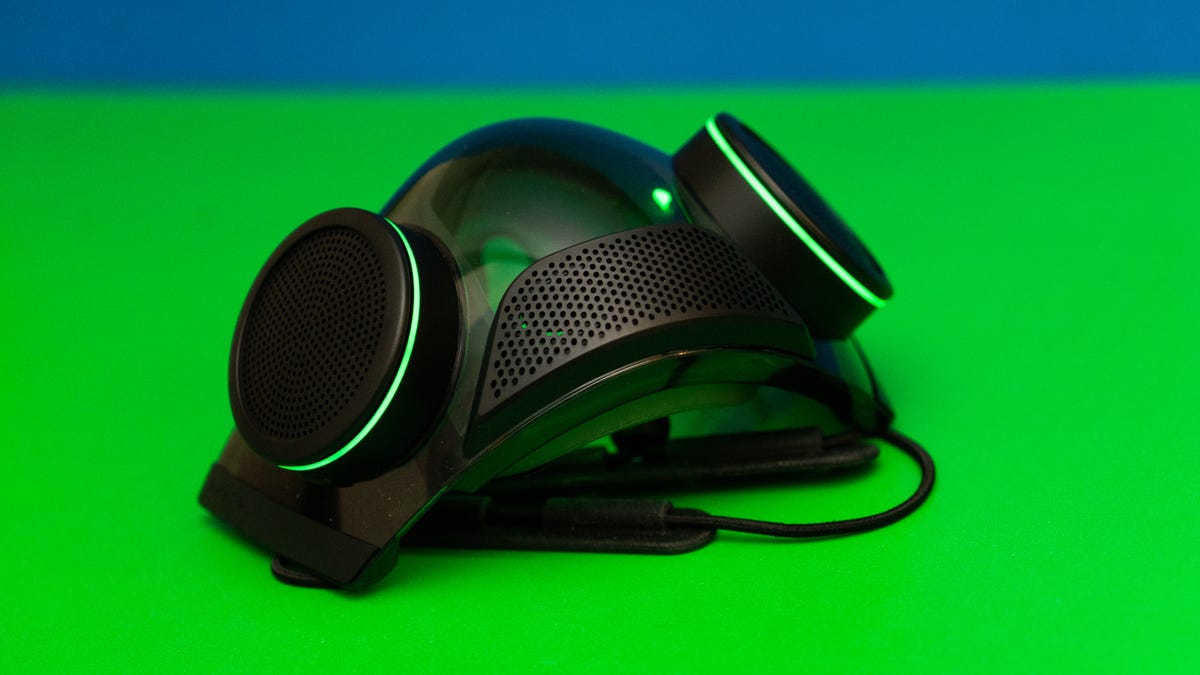Razer Zephyr Pro breathes some life into its mask at CES 2022
Razer's mask concept, a darling of last year's CES, turned into a disappointing reality at CES 2022. This model seeks to add back one of the key features the wearable air purifier lacks.

This is the original Zephyr, but the design is unchanged.
Razer claims it was a "massive success," but I found the first Zephyr N95 mask very disappointing, to the point where I simply don't want to wear it. It debuted as a concept at CES 2021, Project Hazel, that smartly rethought the face mask for a pandemic-stricken era. But Razer had to drop most of the important features to reach a price of $99 and tone down the claims; hence the "wearable air purifier" moniker. One of the most notable MIA features is the built-in voice amp. Without it, no one can hear me talking (a problem I've never, ever had), especially over the somewhat whiny but functional fans. Adding back the voice amp is the one change Razer made for the step-up Zephyr Pro it announced at CES 2022.
The amp adds another $50 to the price, bringing the Zephyr Pro to $149. The Pro mask is slated to ship this year.
Sadly, a lot of the other issues remain. The inner lighting is supposed to show your mouth for better sociability, but it really isn't bright enough. The way you slot the highly touted replaceable N95 filters into the magnetic holders isn't secure, so I have no faith they're actually covering the openings; N95 filters do not necessarily make it an N95 mask.
Plus, the magnets aren't very strong; I accidentally knocked one off with my hand, allowing those fans to suck in the air I was wearing the Zephyr to avoid. The silicone that seals around your nose and mouth and on the straps accumulates hair and dust, which is hard to remove. I could go on, but you get the point.
And I'm still sad, because I continue to hope that the Zephyr will eventually live up to its original promise and become a practical option that survives beyond the first few "That's really cool" reactions. Thus is the downside of trumpeting concept designs, and I suspect as initially unveiled it would cost hundreds more, which no one would pay. Even reinventing it as a real wearable air purifier to use during allergy season might earn it a spot on my face.
Watch: Day 1 of CES 2021 impresses with Razer's high-tech N95 mask and Sony's Airpeak drone

